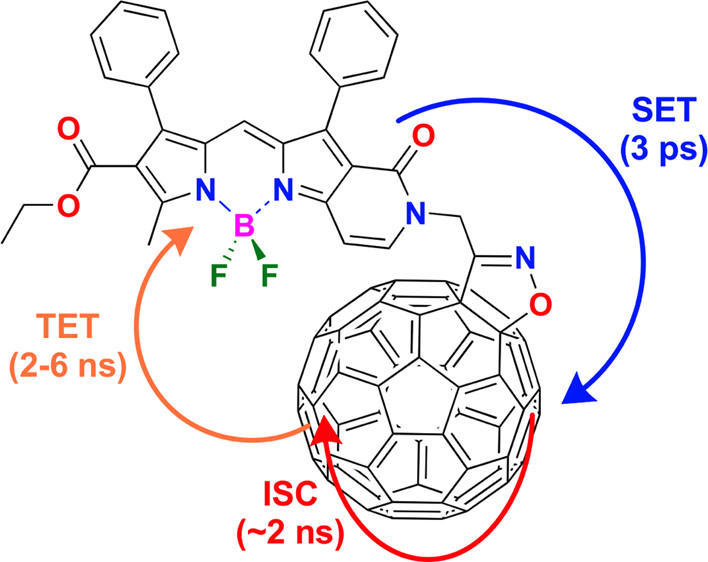R. K. Swedin, A. T. Healy, J. Schaffner, I. A. Kuzmin, Y. V. Zatsikha, V. N. Nemykin, and D. A. Blank The Journal of Physical Chemistry Letters, 2022.
The excited state dynamics in two fully characterized pyridoneBODIPY–fullerene complexes were investigated using time-resolved spectroscopy. Photoexcitation was initially localized on the pyridoneBODIPY chromophore. The energy was rapidly transferred to the fullerene, which subsequently underwent ISC to form a triplet state and returned the energy to the pyridoneBODIPY via triplet–triplet energy transfer. This ping-pong energy transfer mechanism resulted in efficient (>85%) overall conversion of the excited state pyridoneBODIPY constituent despite a complete lack of ISC in the pyridoneBODIPY in the absence of the fullerene partner. The small difference in attachment chemistry for the fullerene did not impact the initial singlet energy transfer. However, the N-methylpyrrolidine bridge did slow both the triplet–triplet energy transfer and the ultimate relaxation rate of the final triplet state when compared to an isoxazole-based bridge. The rates of each step were quantified, and computational predictions were used to complement the proposed mechanism and energetics. The result demonstrated efficient triplet sensitization of a strong chromophore that lacks significant spin–orbit coupling.
